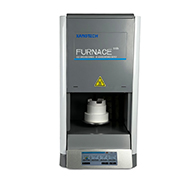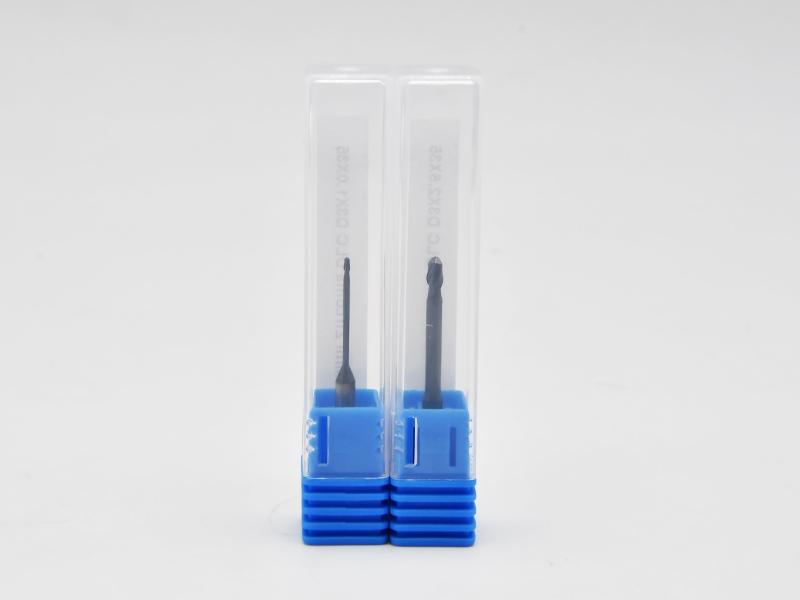Что такое трехэтапная фрезерная система и как она работает?
Каковы компоненты трехэтапной системы фрезеры?
Трехступенчатая фрезерная система - это набор точных инструментов, используемых в стоматологических машинах CAD / CAM для ремонта реставраций, таких как короны, мосты и шпоны. Обычно он включает в себя три типа буров, каждый с определенной работой: грубый бур, полуотделочный бур и отделочный бур.
Грубый бур построен для тяжелого подъема, быстро вырезывая основную форму восстановления из таких материалов, как циркония или PMMA. Полуотделка сглаждает грубые края и готовит кусок к финальным прикосновениям. Затем отделочная бура делает точные разрезы, чтобы создать гладкие поверхности и тонкие детали, необходимые для идеального подхода в рот.
Как каждый этап помогает фрезерному процессу?
Каждая часть трехэтапной фрезерный бур система играет ключевую роль в обеспечении быстрого и точного процесса:
- Грубый Бур: Это бур взрывы через материал быстро. Его жесткие резающие края фокусируются на скорости, а не тонких деталях.
- Полуотделочный BurЭтот шаг очищает оставшиеся грубые пятна и готовит поверхность к окончательной работе.
- Окончательный Bur: Самый точный инструмент, он обеспечивает гладкие отделки, острые края и детальные формы для отличного внешнего вида и подхода.
Разделение задач по этим бурам уменьшает износ на каждом из них. Это повышает производительность и делает их длительными.
Почему выбрать многоступенчатую систему вместо одной?
Многоэтапная настройка имеет некоторые очевидные преимущества по сравнению с использованием всего одного бура:
- Быстрая работаКаждый бур сделан для своей работы, сокращая общее время обработки.
- Более длительный срок службы инструментаНи один бур не перегружен, поэтому они не изнашиваются так быстро.
- Лучшая точность: Специальные инструменты нагнетают тонкие детали лучше.
- Безопасность материаловНекоторые материалы требуют постепенных шагов, чтобы избежать расщепления или трещины.
Этот поэтапный подход делает безопасным и эффективным мелоть даже жесткие материалы, такие как циркония.
Как выбрать правильную фрезерную буру для ваших потребностей?
Какие материалы может обрабатывать трехэтапная система?
Трехступенчатые системы работают с множеством стоматологических материалов, таких как циркониевые блоки, дизиликат лития, диски PMMA, восковые блоки и блоки PEEK. Например:
- Суперпрозрачный предварительно затененный циркониевый блок меняет игру для стоматологических лабораторий своими высочайшими качествами по сравнению с обычными белыми циркониевыми блоками.
- Дисиликат лития отличен для восстановления, благодаря своей сильной химической стабильности и впечатляющей прочности на изгиб.
Эти материалы отличаются по твердости и хрупкости. Выбор бура, который соответствует особенностям материала, обеспечивает лучшие результаты.
О чем нужно думать при выборе фрезерной буры?
Ключевые вещи, которые следует учитывать, включают:
- Тип материалаЖесткие вещества, такие как циркония, нуждаются в алмазном покрытии или карбидных бурах, сделанных для высокопрочной керамики.
- Машина Fit: Убедитесь, что бурсы работают с вашей фрезерной машиной, как Wieland или Фрезерные буры Zotion.
- Форма Бур: Дизайн резающего края влияет на то, насколько гладка отделка.
- Размер инструментаМеньшие буры отлично подходят для мелких деталей, но могут износиться быстрее.
Выбор правильного приводит к лучшим результатам и экономит деньги в долгосрочной перспективе.
Чем отличаются скорость и точность по типу бура?
Грубые буры идут быстро, но не очень точны из-за их агрессивных разрезов. Отборочные борки движутся медленнее, но гвоздь точность, необходимая для чистых краев и хорошего внешнего вида. Полуотделочные буры достигают баланса, сглаждая вещи, сохраняя при этом достойную скорость.
Конструкция бура, как и количество и угол флейт, также влияет на то, насколько хорошо она очищает чипы и качество поверхности во время фрезеры.
Что выделяет фрезерные буры XANGTECH?
Кто такой XANGTECH и в чем их дело?
В XANGTECH мы сосредоточены на высочайших решениях для стоматологических лабораторий по всему миру. Наша линейка включает в себя высококачественные материалы, такие как блоки цирконии, диски PMMA, блоки литиевого дисиликата и широкий спектр фрезерных бур, которые работают с основными системами CAD / CAM.
Мы поставляем отличные продукты, которые делают рабочие процессы более плавными, сохраняя при этом высокое клиническое качество.
Что особенного в трехэтапных фрезерных бургах XANGTECH?
Жесткий и долговечный
Наши фрезеры изготовлены из передовых материалов, которые выдерживают тяжелое использование, даже с плотной керамикой, такой как циркония или ПЭК. Это делает их последним путем дольше, чем стандартные бурсы.
Разработано для гладких отделок
Каждая бура в нашей системе оформлена для своей конкретной работы, обеспечивая быструю грубость без грубых пятен и сверхгладкую отделку для окончательных деталей. Это сокращает дополнительную работу после фрезеры и улучшает подход реставраций.
Работает с тоннами CAD/CAM машин
Наша линейка включает в себя Wieland Milling Bur, Zotion Milling Bur, Imes Icore Milling Bur и многое другое, поэтому они вписываются прямо в ваш рабочий процесс, независимо от платформы.
Мы знаем, что вам нужны инструменты, на которые вы можете рассчитывать в разных системах. Вот почему мы гарантируем, что каждый продукт соответствует строгим стандартам совместимости без ущерба для производительности.
Почему профессионалы выбирают XANGTECH для фрезеры?
Профессиональные стоматологи доверяют нам, потому что мы сочетаем инновации с реальными преимуществами:
- Широкий спектр совместимых инструментов
- Прочное качество строительства
- Отличная поддержка клиентов
- Быстрая техническая помощь
Независимо от того, делаете ли вы отдельные короны или сложные протезы с помощью многослойного циркониевого блока XANGTECH 3D, наши инструменты каждый раз дают последовательные результаты.

Как сохранить ваши фрезеры в верхней форме?
Как часто следует проверять или заменять бурсы?
Проверка ваших разрывов после нескольких случаев помогает обнаружить раннее изношение, такие как тупые края или дополнительные вибрации во время использования. Как часто вы их заменяете, зависит от того, сколько вы их используете и какие материалы вы фрезируете. Более жесткие вещества, такие как циркония, разрушаются быстрее, чем более мягкие, такие как воск или PMMA.
Какой лучший способ очистить и хранить буры?
Избегать материальных смешаний
Всегда используйте отдельные наборы для различных материалов, особенно для безметаллической керамики, такой как циркония, по сравнению с полимерами, такими как PMMA. Это предотвращает загрязнение, которое может помешать качеству восстановления или безопасности пациента.
Правильное охлаждение и смазка
Для мокрого фрезера используйте правильные системы охлаждающей жидкости, чтобы сохранить тепло низким. Это защищает как поверхность материала, так и срок службы бура. Для сухого фрезера придерживайтесь настроек производителя, чтобы избежать теплового напряжения на инструменты.
Может ли плохое использование повредить производительности Bur?
Ты ставишь ставку. Слишком сильное давление или использование неправильных скоростей шпинделя может разрушить буры рано или разрушить их края. Всегда следуйте инструкциям вашей машины для каждого типа бур в нашем каталоге.
Каковы распространенные проблемы Bur и как их избежать?
Почему некоторые бурсы износятся слишком быстро?
Слишком много давления, недостаточное охлаждение во время сухих пробегов или использование неправильной буры для жестких материалов, таких как XANGTECH Super Transparent Pre-Shaded Zirconia Block, могут быстро износить буры.
Как рано обнаружить проблемы с горами?
Следите за более громким, чем обычно, шумом, грубыми отделками на реставрациях, отрезанными краями или более медленными скоростями фрезеры без изменения настроек.
Насколько навыки оператора влияют на жизнь инструмента?
Квалифицированные специалисты, которые знают правильные скорости шпинделя и скорости подачи для каждого материала, и поддерживают свои инструменты, могут продлить последний путь. Они также получают лучшие результаты на всех рабочих местах.

Часто задаваемые вопросы
В: Какова большая победа с трехступенчатой фрезерной системой по сравнению с установками с одним буром?
Ответ: Трехступенчатая система повышает точность и скорость, предоставляя каждой работе (грубость, полуотделка, отделка) свой собственный бур. Это снижает износ и повышает точность.
В: Могу ли я использовать фрезерные борты XANGTECH на любой машине CAD / CAM?
О: Да, у нас есть варианты, такие как Wieland Milling Bur, Zotion Milling Bur, Imes Icore Milling Bur и другие, которые беспрепятственно работают с большинством открытых систем.
В: Как я знаю, когда заменить мою фрезерную буру?
О: Следите за грубыми отделками на восстановлениях или больше шума и вибрации во время использования. Это признаки того, что ваша бура может быть изношена или повреждена.












